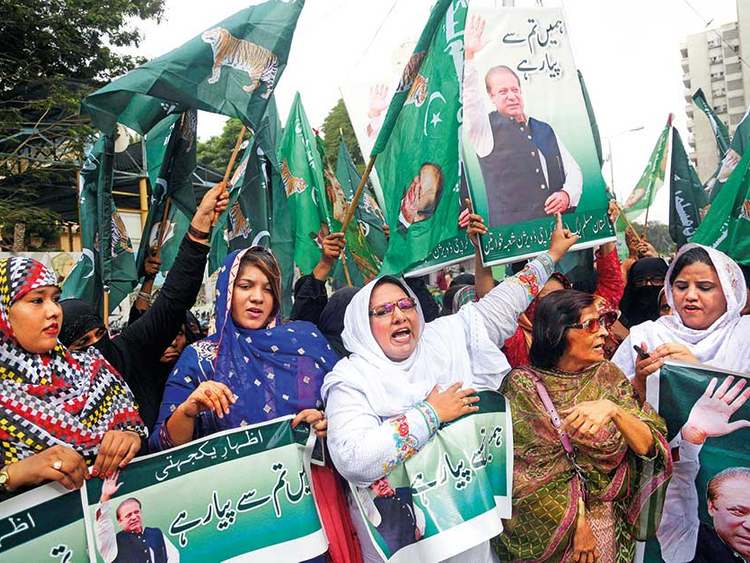By: Nishwa Tasavvar

Around limiting other factors involving expenditures, The Pakistan Army decided to “limit” the Pakistan Day parade, which is held annually on March 23, due to the country’s looming economic crisis.
Pakistan Army displays its arsenal and military prowess as part of the celebration of Pakistan Day, which honors the adoption of the 1940 Lahore Resolution; however, this year, the military has decided to prefer cost-cutting over the display of militaristic chauvinism.
The last time this celebratory parade was called off was when the deadly coronavirus sent shockwaves across the world. Still, this year, the compromises made for the economic recovery have maxed out.
With a historic low for the currency, dwindling foreign exchange reserves, and decades-high inflation, Pakistan has been experiencing a severe economic crisis with no end in sight. The federal government launched a massive austerity drive in February this year to cut spending while aiming for an ambitious plan to save Rs200 billion to tackle the financial crisis and this year’s limited military parade seems to be another effort to prefer austerity over traditional militarism.
Pakistan Day (Lahore Resolution) was the first step towards attaining a distinct nation for the Muslims of the subcontinent, which is why it is so significant to the people of Pakistan.
The British Empire was in control of the subcontinent for two centuries, and Muslim leaders believed that Muslims would continue to be forced into a minority even after gaining independence. British India’s Muslim minority sought a distinct Muslim state, which Muhammad Ali Jinnah envisioned and finally a resolution was passed in 1940. Following the adoption of the Pakistan Resolution, the Muslim community underwent a transformation to become a nation with distinct sociocultural and political characteristics and a relentless drive to carve out a separate homeland for themselves.
As the country celebrates Pakistan Day, it reaffirms its commitment to Quaid-e-Azam Muhammad Ali Jinnah’s vision of Pakistan as a real Islamic welfare state, as well as to the nation’s progress, prosperity, and security. Special prayers are part of the celebrations across the country for the prosperity and economic security of the state that now seems to be on the verge of default.
Pakistan Day traditionally starts with cannon salutes at the federal capital and at the regional capitals. On this day, Pakistan also pays rich tribute to Allama Muhammad Iqbal and ceremonies are staged at his mausoleum.
But Pakistan Day also reminds us that waiting around and hoping for the best won’t do the trick now in much the same fashion as it did not bring any fruit back in the 1940s. The government and institutions need to scale up in order to combat this increasing economic recession and derive spirit from the Muslims of the 1940s to realize that actions speak louder than words.
Apart from macroeconomic measures, some confidence-building measures should also be taken to help the economy recover from its current state. For instance, discretionary land allotments must be banned and state land must only be sold at public auction. Besides, the financial loss incurred due to state-owned enterprises (SOEs) should be curtailed through a rigorous privatization program and lastly, steps must be taken to foster an atmosphere conducive to investment. As a case in point, I will leave readers with the fact that the debt of SOEs was 1.74 trillion in May 2022.
Recurrent and capital spending, as well as the consequences of spending, taxes, and transfers on private consumption, investment, and net exports, are the other two ways that governments can directly affect the economic activity of Pakistan.
The decision-makers need to realize that Pakistan requires a strategy for rapid, egalitarian, and sustained economic growth that includes the country’s rapidly expanding population. Economic expansion has historically depended on imports and has been driven by consumer spending. As a result, once growth rises above the 5-6% range, Pakistan’s economy begins to overheat. The current administration must focus its efforts and reallocate its funds to support export expansion, boost agricultural output, and address the shortfalls in domestic fuel generation.
Pakistan’s boom and bust cycles have been under the watch of international lenders and that is the reason they are reluctant to support the country this time when the financial crunch has been the worst. The country has seen spot-healing measures to be ineffective and it is high time we do a complete surgery of the system to get rid of this recession which is not only challenging our lower and middle class but also impacting our national events and celebrations which are the hallmarks of any lively nation.
The writer is a freelance columnist. She can be reached at [email protected]




